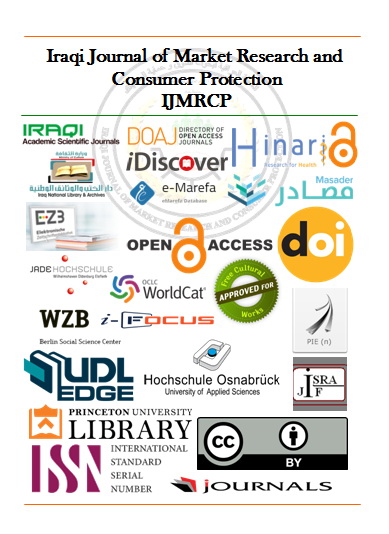Determine the chemical content of Bay (Laurus nobilis L.) leaves extract and its effectivenss against some bacterial species
Determine the chemical content of Bay (Laurus nobilis L.) leaves extract and its effectivenss against some bacterial species
Keywords:
chemical content, Bay (Laurus nobilis L.) leaves, effectivenss against, some bacterial species.Abstract
This study has been performed to study the inhibitory effects of crude plant extracts of Bay (laurus nobilis) leaves against some bacterial isolates represented by Staphylococcus aureus, Staphylococcus epidermids, Proteus vulgaris, Bacillus subtilis, Escherichia coli, and Pseudomonas aeroginosa in vitro. The results showed that percentages of essential chemical of laurus nobilis leaves which represented by moisture, total oil, total ash, crude protein, crude fibers, carbohydrites and caloric values in dry weight are 5.96, 4.28, 14.2, 8.75, 24.8, 76.99%, and 284.92 kcal/100g respectively, the percentages of some major and minor mineral elements of laurus nobilis leaves powder which represented by Mg, Fe, Cu, Pb, Cd and As, are: 0.211, 0.165, 0.023, 0.011, 0.00, 0.0004 mg/g and 3.140 ppm, respectively, while Co did not appear in the laurus nobilis leaves. The aqueous extract of the plant was acidic its pH 5.79. The results of initial detection (precipitation) showed that ethyl acetate and aqueous extracts of laurus nobilis leaves contain all active compounds represented by tannins, saponins, flavonoides, glycosides, phenols, terpenoids, sterols and cumarin, while alcoholic and hexan extracts contain also the some compounds except saponins, hexane extracts no phenols. Through the study of the effect of laurus nobilis leaves extracts against growth of bacteria in vitro a significant differences at (p<0.05) was observed, It was found that the ethyl acetate and alcoholic extracts more were effective on the bacterial species than the other remaining extracts against the growth of bacteria, inhibitory activity was of all bacterial species at concentration of 3.125mg/ml and it was more effective on Staphyloccocus epidermids for ethyl acetate extract giving inhibitory zone estimated 15.5mm, while alchoholic extract was activity against bacteria E. coli at inhibition zone estimated 15mm, while hexan extracts has been showed inhibition activity of same concentration only on bacteria Staphyloccocus aureus with zone 10.5mm, as for it has been showed inhibitory activity of bacteria Proteus vulgaris at concentration 12.5mg/ml with zone 13mm, as for Staphyloccocus epidermids, Bacillus subtilis, E. coli and Pseudomonas aeroginosa were their inhibition activity at concentration 25mg/ml while Staphyloccocus aureus was highest inhibition at zone 16.5mm and 14mm of same concentration as for the hexan and aqueous extracts respectively, while the inhibition of bacteria Proteus vulgaris was zone 10mm of aqueous extract, inhibitory activity of bacteria Pseudomonas aeroginosa has been showed at concentration 50mg/ml of zone 16mm, as for the bacteria Staphyloccocus epidermids, Bacillus subtilis were the inhibitory zone at 12mm and E. coli at zone 18mm of concentration 100mg/ml. When measuring the minimum inhibitory concentration (MIC) for each bacterial species at a concentrations 6.25- 12.5mg/ml for ethyl acetate and alcoholic extracts have high inhibitory activity compared with the other concentrations, but the hexane and aqueous extracts have affected bacterial species at 12.5- 100 mg/ml, except for Staphyloccocus aureus and Bacillus subtilis, which was not affected by any of the concentrations of extracts.





